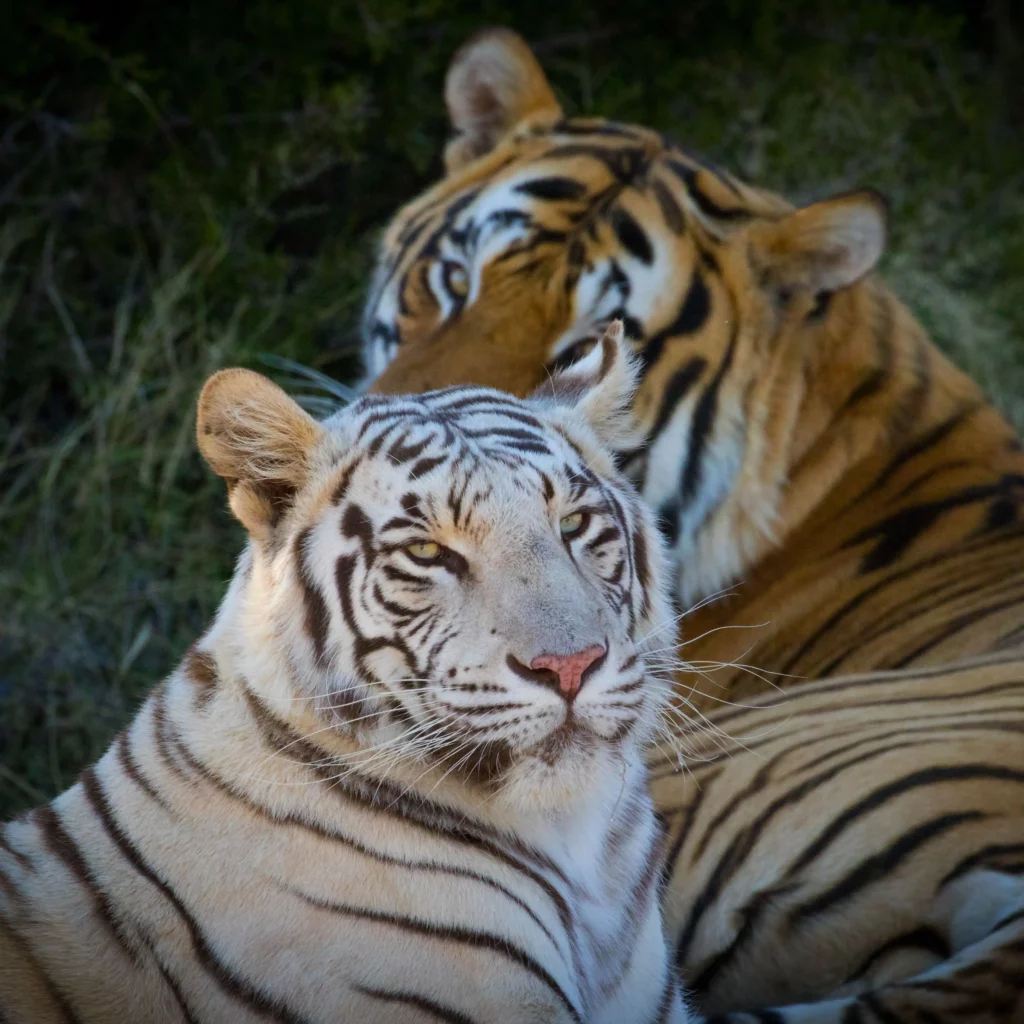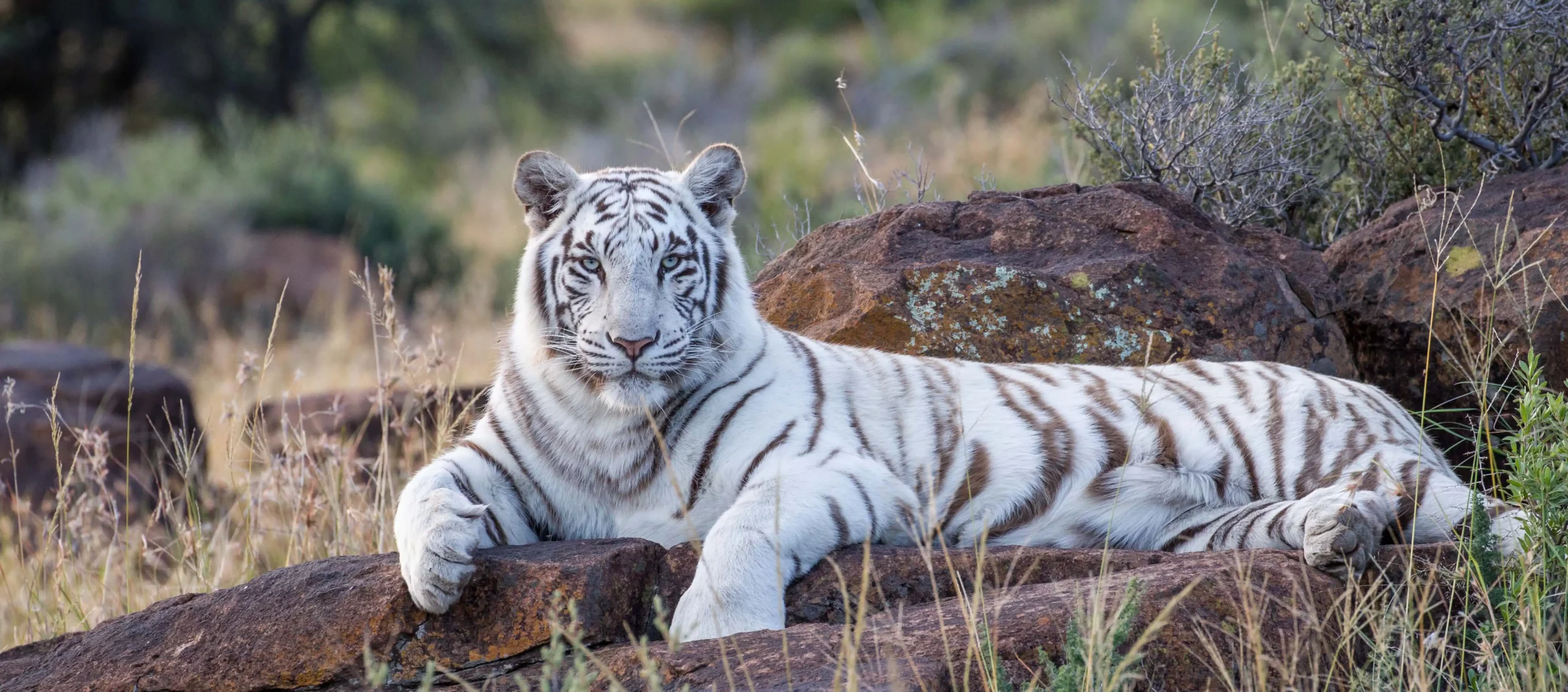“This big cat is a critical part of ecosystems and cultures.
If forests are emptied of every last tiger, all that will remain are distant legends and zoo sightings.”
Sir David Attenborough’s documentary series, “The Tiger: An Old Friend.”
The White Tiger: A Natural Wonder
The white tiger is not a man-made creation or a separate subspecies. It’s a rare result of a recessive gene found within wild tiger populations. Leucism, the condition that causes a white coat and light blue or green eyes, is a diluted form of normal tiger colours. Unlike albinism, which results in pink eyes and paw pads, leucism preserves skin pigmentation. Interestingly, leucism is also found in wild lions in Kruger Park.
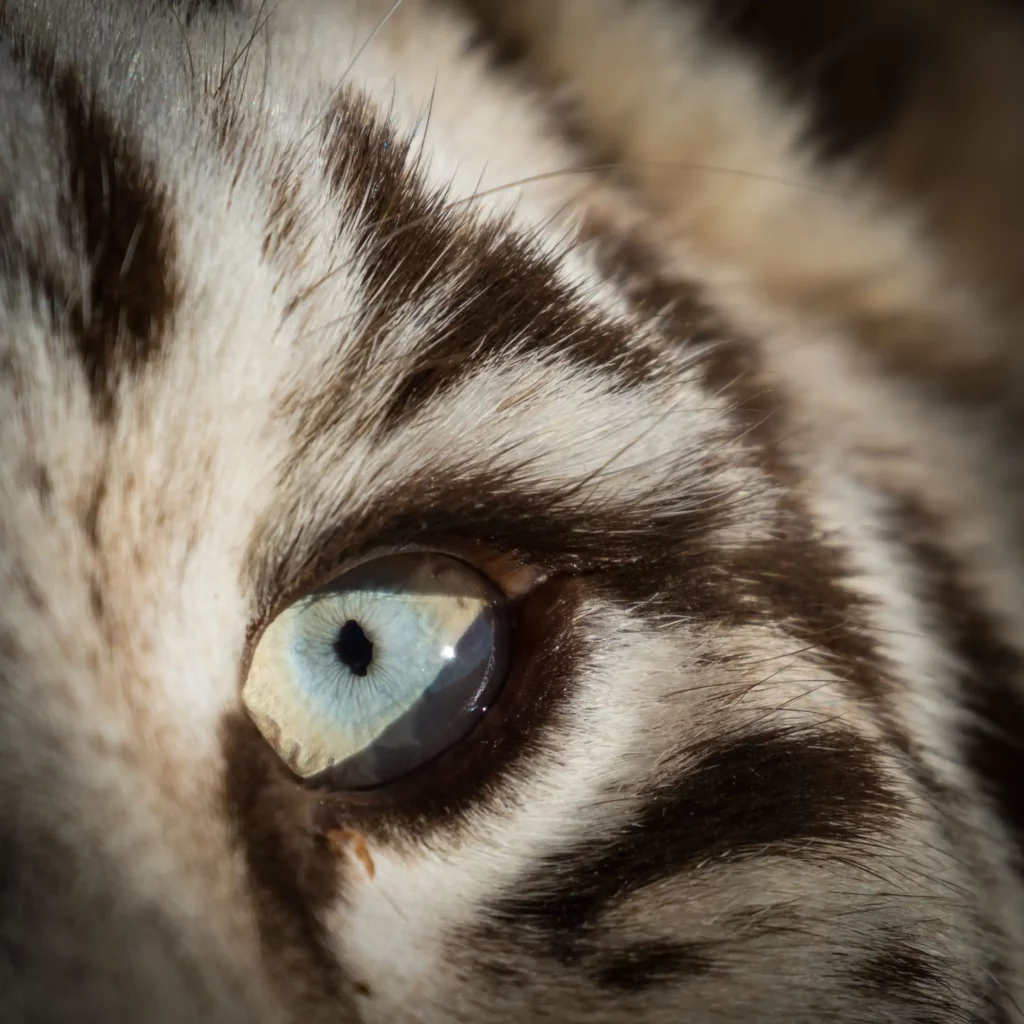
The History of White Tigers
Mohan, the founding father of the white tigers of Rewa, India, was captured as a cub in 1951. He was bred in captivity, leading to the large population of white captive tigers today. While many captive white tigers are inbred for human exploitation, it’s important to note that white tigers can be outbred with normal-coloured tigers to improve their genetics and health.
Tibo and Mishka: The Wild White Tigers
At Kishindo, we’re proud to have the world’s only wild white tigers, Tibo was born in the wild from normal-coloured parents, she is a testament to Kishindo’s successful outbreeding project. Tibo is a thriving tigress, capable of hunting and defending her territory. She’s produced two litters of cubs, including her daughter, Mishka, who is also a very dominant thriving wild white tigress.
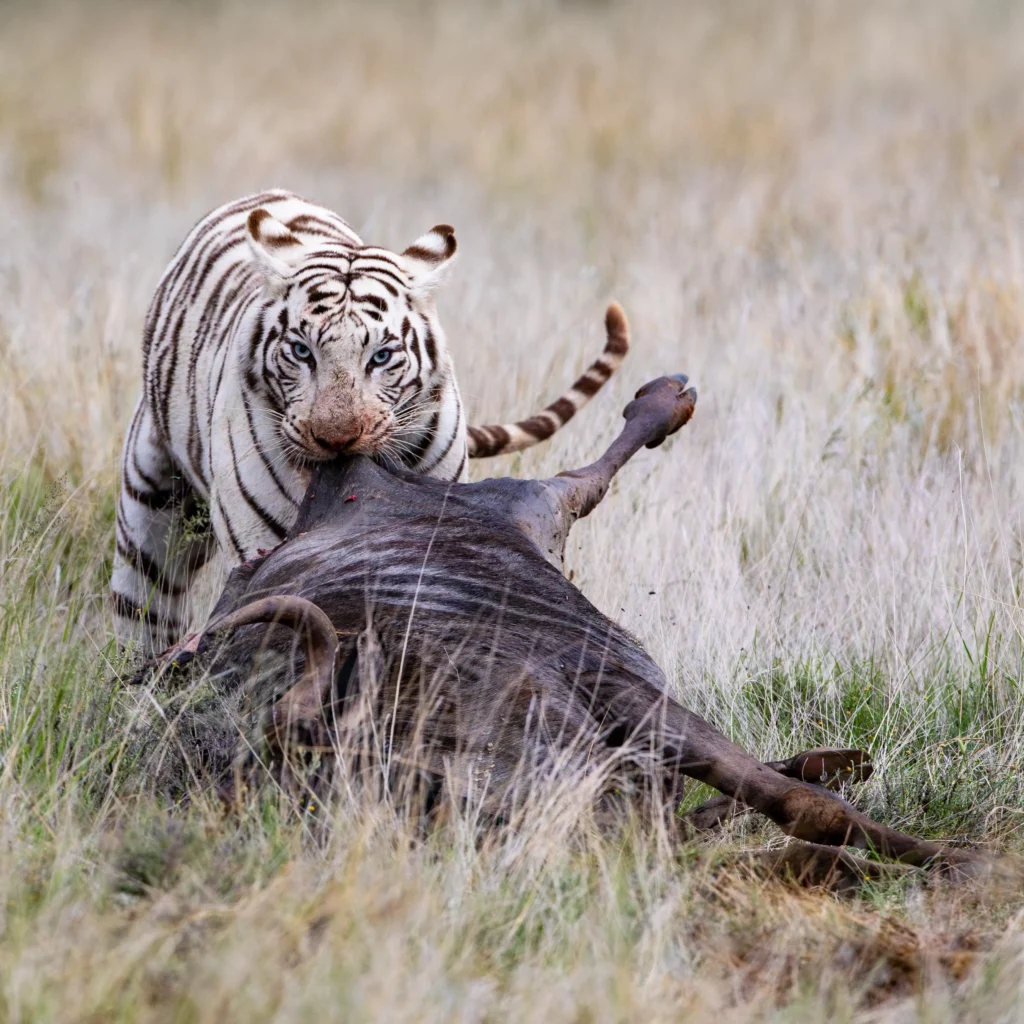
Mishika is an extremely successful hunter.
Preserving the White Gene
Our aim at Kishindo is to maintain the rare white leucistic gene within our population of normal-coloured tigers. By breeding Tibo with Kumba, a normal-coloured male tiger, we’re ensuring that future generations of tigers are genetically healthy, but also may carry the white gene, even if they have orange coats. This approach replicates the natural process that led to the birth of a few white cubs in Indian tiger populations, before all the wild white tigers were hunted to extinction.
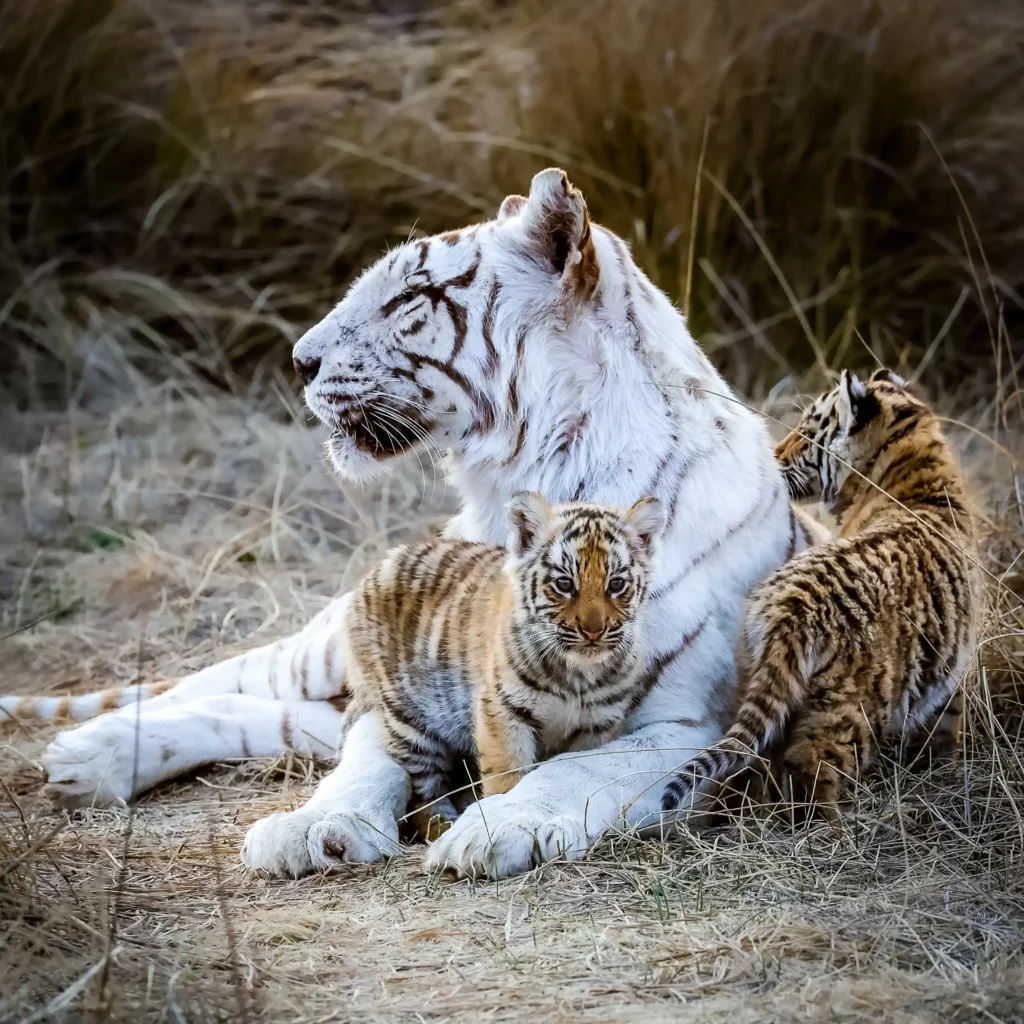
Tibo with her cubs born in 2023.
The Importance of Ethical Tiger Conservation
While captive breeding programs can be beneficial for research, the excessive number of captive tigers worldwide, often kept for profit, poses significant risks to wild tiger conservation. Many captive tigers especially white tigers are inbred, unhealthy, and contribute to the illegal trade in tiger parts. Tiger Canyon is a successful model where captive born tigers can be re-wilded and live out their lives as wild tigers.
